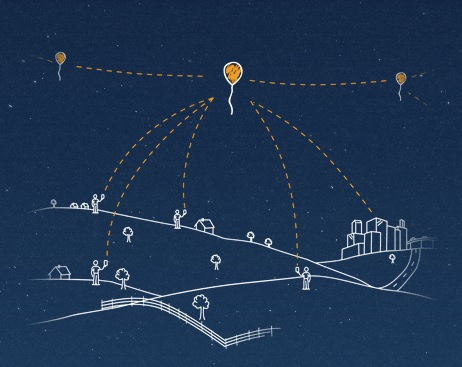In Indonesia today, only about 1 out of every 3 people are connected to the web, and most of their connections are painfully slow. Many people live in areas without existing Internet infrastructure; on an archipelago of over 17,000 islands, with mountains and jungles, it’s difficult to run fiber optic cable or install mobile phone towers.
Google announced starting next year, the top three mobile network operators in Indonesia will begin testing Project Loon balloon-powered Internet. This will bring the Internet within reach of 100 million Indonesians.
What Is Project Loon?
Project Loon balloons float in the stratosphere, twice as high as airplanes and the weather. In the stratosphere, there are many layers of wind, and each layer of wind varies in direction and speed. Loon balloons go where they’re needed by rising or descending into a layer of wind blowing in the desired direction of travel. By partnering with Telecommunications companies to share cellular spectrum we’ve enabled people to connect to the balloon network directly from their phones and other LTE-enabled devices. The signal is then passed across the balloon network and back down to the global Internet on Earth.
How Loon Works?
Project Loon balloons travel approximately 20 km above the Earth’s surface in the stratosphere. Winds in the stratosphere are stratified, and each layer of wind varies in speed and direction. Project Loon uses software algorithms to determine where its balloons need to go, then moves each one into a layer of wind blowing in the right direction. By moving with the wind, the balloons can be arranged to form one large communications network.
Where Is The Loon Project Heading To?
Project Loon began with a pilot test in June 2013, when thirty balloons were launched from New Zealand’s South Island and beamed Internet to a small group of pilot testers. The pilot test has since expanded to include a greater number of people over a wider area. Looking ahead, Project Loon will continue to expand the pilot, with the goal of establishing a ring of uninterrupted connectivity at latitudes in the Southern Hemisphere, so that pilot testers in these latitudes can receive continuous service via balloon-powered Internet.
October 29, 2015





